The Wooden Horse
7.2 /10 1 Votes7.2
Duration Language English | 7/10 IMDb Genre Drama, History, War Country United Kingdom | |||||||||||||||||||||||||||||||||
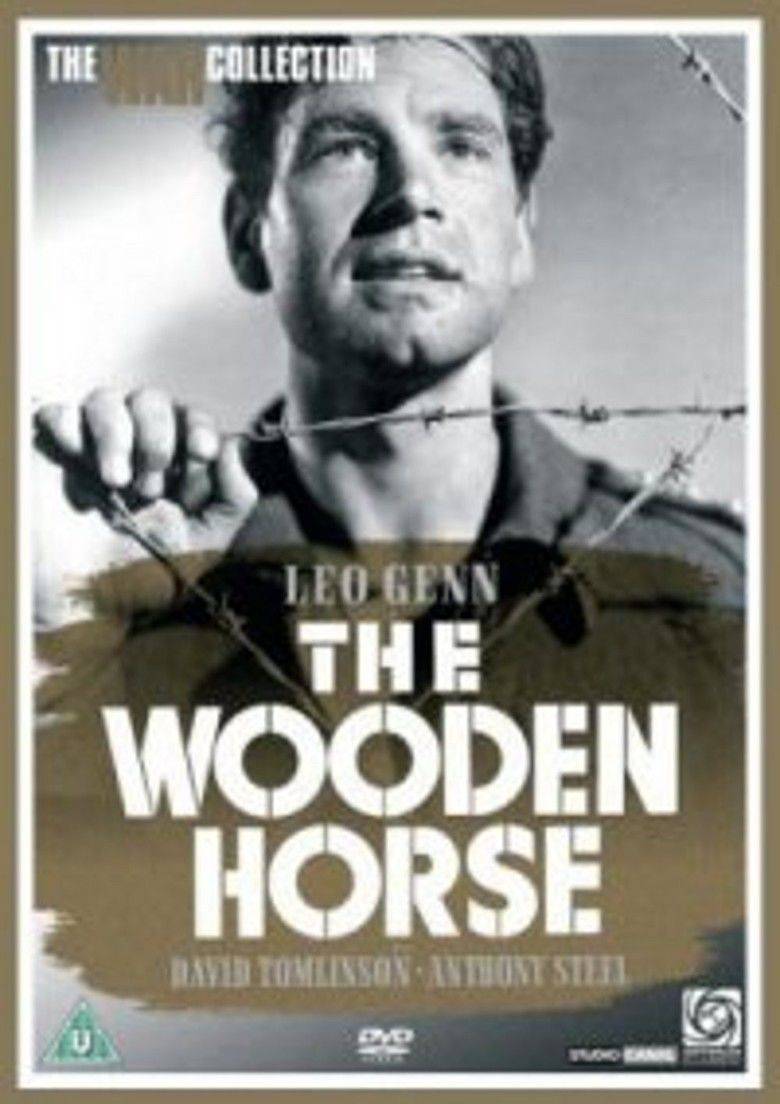 | ||||||||||||||||||||||||||||||||||
Release date 16 October 1950 (1950-10-16) Cast (Peter Howard), (Phil), (John Clinton), (Nick Bennett), (Nigel), (Group Capt. Wardley) Similar movies The Seventh Cross , Rambo: First Blood Part II , Seven Years in Tibet , Hart's War , Von Ryan's Express , Unbroken | ||||||||||||||||||||||||||||||||||
The Wooden Horse is a 1950 British Second World War war film starring Leo Genn, David Tomlinson and Anthony Steel. It was directed by Jack Lee. It is based on the book of the same name by Eric Williams, who also wrote the screenplay.
Contents

The film depicts the true events of an escape attempt made by POWs in the German prison camp Stalag Luft III. The wooden horse in the title of the film is a piece of exercise equipment the prisoners use to conceal their escape attempt as well as a reference to the Trojan Horse which was also used to conceal men within.
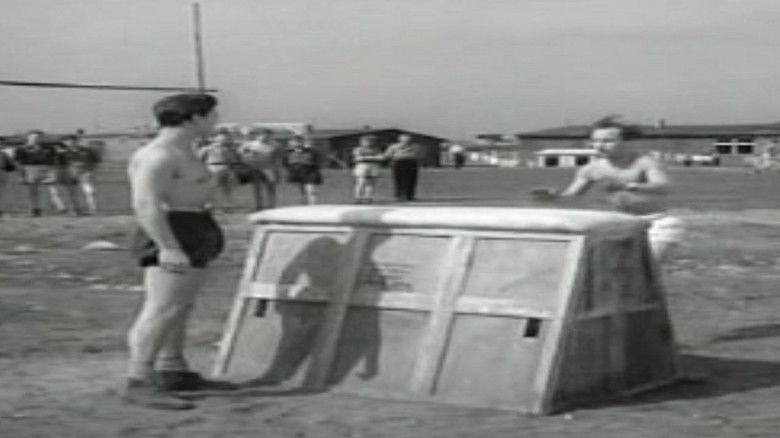
It was shot in a low-key style, with a limited budget and a cast including many amateur actors.

Plot
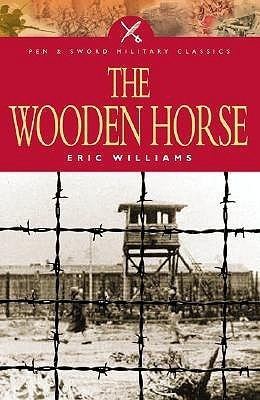
The somewhat fictionalised version of the true story is set in Stalag Luft III — the same POW camp where the real events depicted in the film The Great Escape took place, albeit from a different compound – and involved Williams, Michael Codner and Oliver Philpot, all inmates of the camp. In the book and film, the escapees are renamed "Flight Lieutenant Peter Howard", "Captain John Clinton" and "Philip Rowe".

The prisoners are faced with the problem of digging an escape tunnel despite the accommodation huts, within which the tunnel entrance might be concealed, being a considerable distance from the perimeter fence. They come up with an ingenious way of digging the tunnel with its entrance located in the middle of an open area relatively near the perimeter fence and using a vaulting horse (constructed largely from plywood from Canadian Red Cross parcels), to cover the entrance.
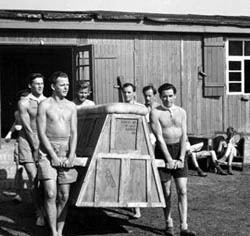
Recruiting fellow-prisoners to form a team of vaulters, each day they carry the horse out to the same spot, with a man hidden inside. The prisoners begin gymnastic exercises using the vaulting horse, while the concealed man digs down below it. At the end of the session, the digger places wooden boards, cut to fit the aperture, in the hole, and fills the space with sandbags and dry sand kept for the purpose – wet sand taken from below the surface would be darker and hence give away the tunneling activity.
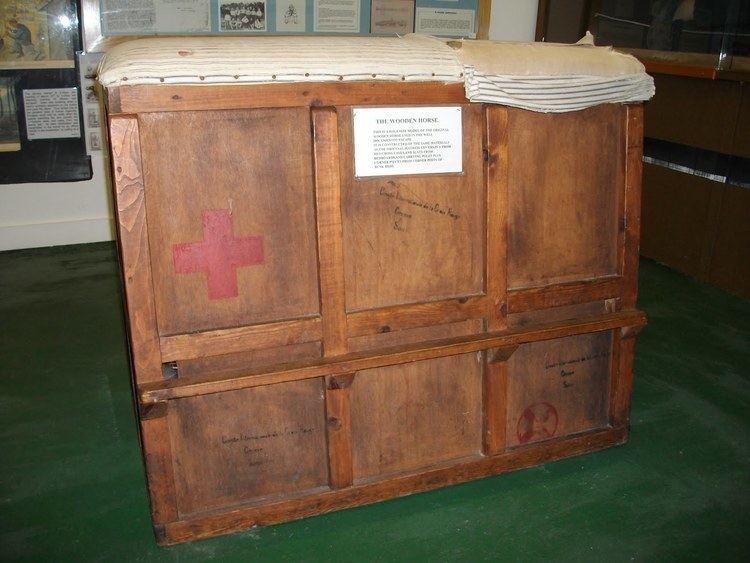
As the tunnel lengthens, two men are eventually hidden inside the horse while a larger group of men exercise, the two men continue to dig the tunnel. At the end of the day, they conceal the tunnel entrance once more and hide inside the horse while it is carried back to their hut. They also devise a method of disposing of the earth coming out of the tunnel. They recruit a third man, Phil, to assist them, with the promise that he will join the escape.
At the final break-out, Clinton hides in the tunnel during an Appell (roll call), before three men are carried out in the horse: the third to replace the tunnel trap.
Howard and Clinton travel by train to the Baltic port of Lübeck; (in fact, they travelled via Frankfurt an der Oder to Stettin). Phil elects to travel alone, posing as a Norwegian margarine salesman and travelling by train via Danzig (now Gdańsk). He was the first to get to neutral territory.
Howard and Clinton contact French workers and through them meet "Sigmund", a Danish resistance worker who smuggles them onto a Danish ship. They then have to transfer to a fishing boat and arrive in Copenhagen, before being shipped to neutral Sweden. There they are reunited with Phil, who arrived earlier.
Some details from Williams' book were not used in the film, e.g. the escaped POWs discussing the possibility of visiting potentially neutral brothels in Germany, an idea that was abandoned because of the fear that it might be a trap.
Production
Ian Dalrymple and Jack Lee read the book and bought the film rights. They out-bid John Mills who also wanted to make it. "I expect John would have been very good in it also," said Jack Lee "probably better than Leo Genn, who was very stolid as an actor. Tony Steel was fine to work with - just a physical type, a young chap who could do certain things."
The film was a breakthrough role for Anthony Steel.
The bulk of the film was shot in Germany. It went over budget, for several reasons: the weather was poor and several scenes had to be [done again]. "A lot of it was my fault, taking too long to shoot and shooting too much stuff," said Lee. He added "there was indecision on my producer's part about the ending; Ian said we should shoot things in two different ways. The ultimate ending was a perfectly reasonable one but I was off the film by then. Ian shot it himself."
Reception
The film was the third most popular film at the British box office in 1950 and led to a series of stories about POWs, including Albert R.N. (1953), The Colditz Story (1955), The One That Got Away (1957), The Camp on Blood Island (1958) and Danger Within (1959).
Trivia
The Wooden Horse plan itself was actually conceived and entirely thought through by Williams and Michael Codner in equal measures. In Oliver Philpot's later book The Stolen Journey, the author made it clear that he initially thought the plan was "crackers", telling its inventors "I give it a couple of days!". Nevertheless, Philpot helped with the sand dispersal and later with the actual digging – at which point he was invited to take part in the escape.
The actor Peter Butterworth, who appeared in many of the Carry On films, was one of the vaulters in the real-life escape. He applied for a role in the subsequent film but did not get a part as he was not considered to look convincingly heroic and athletic enough.
References
The Wooden Horse WikipediaThe Wooden Horse IMDb The Wooden Horse themoviedb.org
